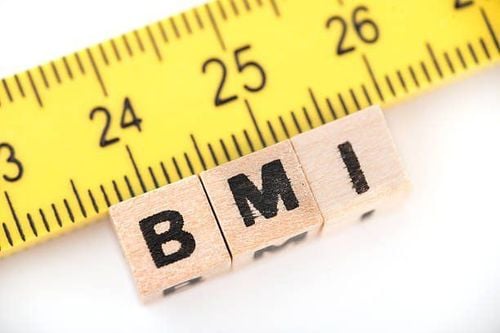This is an automatically translated article.
Central obesity not only makes the body shape lose its aesthetics. In addition, the accumulation of too much fat around the waist - hips is considered a factor leading to diseases such as diabetes and cardiovascular diseases. In addition, it is also a predictor of your longevity.
1. Is waist size a predictor of longevity?
Research has shown that adults with large waist sizes have a higher risk of early death than those with normal waist sizes. In fact, one study looked at data from 650,000 adults showed an estimated reduction in life expectancy for the person with the highest waist circumference compared with the person with the smallest waist circumference around 3 years of age for men and 5 years of age for women. This effect was independent of other risk factors, such as age, body mass index, physical activity, smoking history, and alcohol use history. Specifically, this data shows that men with a waist circumference of 43 inches (110cm) have a 50% higher risk of death than men with a waist circumference of 37 inches (94 cm). For women, those with a waist circumference of 37 inches (94 centimeters) were 80 percent more likely to die than women with a waist circumference of 27.5 inches (70 centimeters).
Large waist circumference leads to excess belly fat, which has been linked to conditions such as obesity, such as type 2 diabetes, high cholesterol, high triglycerides, high blood pressure, and coronary artery disease.

Kích thước vòng eo to tăng nguy cơ mắc các bệnh lý
2. How to measure waist circumference
Locate the hip bone on the abdomen Wrap the measuring tape around the body but do not touch the skin. The tape measure should be parallel to the floor. Relax while measuring. If you're not satisfied with your current measurements, plan your physical activity, eat well, and see ways that can make a positive impact on your waistline and overall health.

Duy trì thói quen tập luyện giúp bạn có một vòng eo như mong muốn
3. Waist size could be the key to prolonging life
The increased risk of diseases associated with having a large waist occurred even when their body mass index was in the healthy range. Centrally obese people with a normal BMI had a 22% higher risk of death than those with fat stored elsewhere in the body. Those with obese BMIs had a 13% higher risk of premature death than those with central obesity.
Research also shows that if a person has a large intestine, it will cause dangerous problems for heart health. The risk of heart-related death was 25% higher for people with central obesity with a normal BMI, and for those with a BMI that was overweight and had a large waist circumference, the risk of death was 26 %. This risk of death would be 56% for someone with an obese and moderately obese BMI.
BMI is a rough estimate of a person's body fat based on height and weight measurements. A normal BMI is 18.5 to 24.9 - according to the US Centers for Disease Control and Prevention. The index for the overweight group was between 25 and 29.9 and the obese group was 30 or more.
If a person is 5 feet, 9 inches is considered normal when their weight is between 125 and 168 pounds. And the person is considered overweight when the weight is between 169 and 202 pounds and classified as obese if the weight is 203 pounds or more.
Waist-to-hip ratio is a measurement used to determine if excess belly fat is present. The waist-to-hip ratio is calculated by dividing the waist measurement by the hip measurement.

Chỉ số BMI thuộc nhóm béo phì kết hợp với kích thước vòng eo lớn tăng nguy cơ tử vong
If a woman's waist/hip ratio is above 0.85 or above 0.90 for men, then the person should be concerned and find ways to change their lifestyle to reduce or reduce their belly
Ruth Loos is director of the genetics of obesity and related metabolic traits at the Charles Bronfman Institute of Personal Medicine in New York City. Previous studies have shown that belly fat may be more detrimental to a person's health than fat stored elsewhere in the body. Studies have been fairly consistent in showing that the waist-to-hip ratio contributes to the disease.
New research looked at nearly 43,000 people taking part in the UK Health Survey and the Scottish Health Survey. Each person's BMI and waist/hip circumference were compared with their health history during 10 years of follow-up. The average age of the study participants was 58 and just over half were centrally obese, 44% were overweight, and a quarter were obese. People who are overweight and obese are more likely to have central obesity than people with a normal BMI. The researchers also found that the risk of disease caused by a large waist size was the same for men and women. However, men are more likely to store fat in the midsection, which means they are more likely to develop central obesity. Women tend to store fat in the hips and buttocks.
Waist fat is linked to insulin resistance, high cholesterol. These are all risk factors for heart disease. A high waist-to-hip ratio may also indicate less muscle mass in the legs, which also increases the risk of heart disease. In fact, people with a high BMI often have greater amounts of fat stored in their hips and legs, and this appears to be better for metabolic and cardiovascular health. Belly fat may be more harmful than fat stored in the hips because it affects the body's central organs more directly. If the body has fat storage around the abdomen and around the organs, it will affect liver function and heart function. People with belly fat should take steps to improve their health by eating right, exercising, and cutting out other risk factors such as smoking or drinking.
Please dial HOTLINE for more information or register for an appointment HERE. Download MyVinmec app to make appointments faster and to manage your bookings easily.
Reference source: webmd.com; mayoclinic.org.













